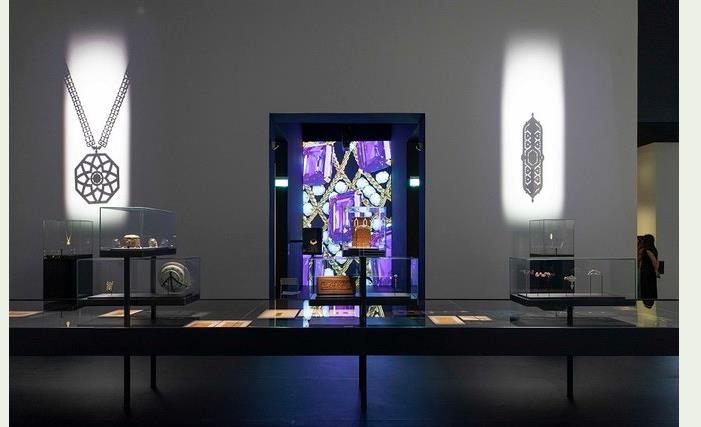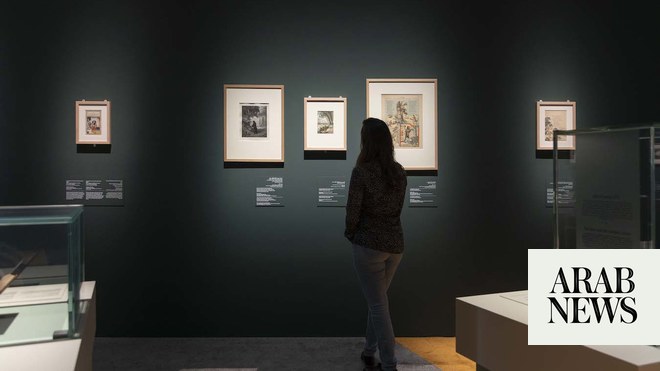
ABU DHABI: It is a razzle dazzle affair at the Louvre Abu Dhabi where visitors are being wowed by the ongoing exhibition “Cartier: Islamic Inspiration and Modern Design,” running until March 24.
For the latest updates, follow us on Instagram @arabnews.lifestyle
Aside from showcasing the French luxury brand’s sparkling gems, the main idea of the exhibition is to examine how Islam-related art and the visual culture of “the Orient” — from Africa to Persia and India — historically influenced the unique craftsmanship of Cartier from the early 20th century onwards.
The exhibition examines how Islam-related art historically influenced the unique craftsmanship of Cartier. (Supplied)
“During early 20th century Paris, the European milieu in general came into contact with the Islamic arts due to the fall of the Qajar and Ottoman Empires. A lot of artworks moved and dispersed out of these locations and regions to the European art market. Equally at the time, there were also universal expositions,” the Louvre Abu Dhabi’s senior curatorial assistant Fakhera Al-Kindi told Arab News at the busy exhibition. “The visual compositions and color palettes were fascinating and new to the eye. It was a new modernity to them.”
In a dimly lit gallery, the exhibition showcases a wide selection of more than 400 items, including books, brooches, bracelets, tiaras, cigarette boxes, ceramics, drawings, photographs and artifacts. Some of the displayed jewelr belonged to Hollywood star Elizabeth Taylor, the Duchess of Windsor Wallis Simpson, and the Maharaja and Maharani of Indore, India.
“Oriental” bandeau by Cartier Paris in 1911. (Supplied)
Designers at Cartier were inspired by ornamental and geometrical patterns and motifs, based on images found in detailed publications and museum collections, namely at the Louvre and the Musée des Arts Décoratifs in Paris. Architecture played an important role too. For instance, the exhibition features a small yet enchanting room dedicated to the bedazzling buildings of Samarkand, Uzbekistan, which is famed for its eye-catching blue tiles. The Cartier brothers also travelled abroad, to places like India and Bahrain, securing valuable materials — pearls and carved gemstones included — that elevated the overall quality and look of their creations.
“The artists took a step aside with the source of inspiration itself to create their own take on the object,” explained Al-Kindi. “The creative process went through so many stages: Redeveloping, reinterpreting, reseeing the motif to become something else. I think this exhibition is very easy to digest because it’s very visual.”












